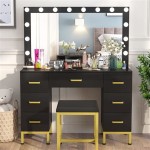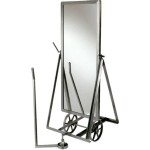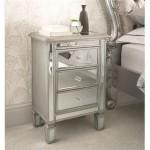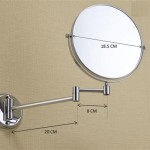Mirror Effect Wall Coverings
Mirror effect wall coverings offer a dramatic and versatile way to transform interior spaces. From creating the illusion of larger rooms to adding a touch of glamour and reflecting natural light, these coverings provide a range of design possibilities. This article explores the various types of mirror effect wall coverings, their applications, and considerations for installation and maintenance.
Types of Mirror Effect Wall Coverings
Several options exist for achieving a mirrored look on walls, each with its own characteristics and benefits. Traditional glass mirrors, while effective, can be heavy, expensive, and prone to breakage. Modern alternatives offer lighter, more flexible, and often more affordable solutions.
Acrylic mirror sheets are a popular choice due to their lightweight nature and shatter-resistance. They are available in various sizes and thicknesses, offering flexibility for different applications. While not as reflective as glass, acrylic mirrors still provide a significant mirroring effect and are easier to cut and install.
Mirrored wallpaper presents another option, offering a peel-and-stick application for ease of installation. This type of covering often utilizes a metallic backing to achieve the reflective quality. Mirrored wallpaper comes in a variety of patterns and designs, allowing for greater customization compared to solid sheets.
Mirrored tiles, typically made of glass or acrylic, provide a segmented approach to mirrored wall coverings. They can be arranged in various patterns and offer a distinct aesthetic compared to large, continuous surfaces. Mirrored tiles also allow for easier replacement of individual pieces in case of damage.
Finally, mirrored films offer a thin, flexible, and adhesive-backed solution. These films can be applied to existing walls or other smooth surfaces, providing a cost-effective way to achieve a mirrored effect. Mirrored films are also available in different tints and finishes, expanding design possibilities.
Applications of Mirror Effect Wall Coverings
The versatility of mirror effect wall coverings allows for their use in a range of residential and commercial settings. In smaller rooms or spaces with limited natural light, these coverings can create the illusion of spaciousness by reflecting light and visually expanding the area.
In larger rooms, strategically placed mirror effect wall coverings can enhance the overall aesthetic by adding depth and dimension. They can be used to highlight architectural features or create focal points within the space. For example, a mirrored wall behind a fireplace can amplify the light and warmth of the fire, creating a cozy and inviting atmosphere.
In commercial settings such as restaurants, bars, and retail stores, mirror effect wall coverings can contribute to a glamorous and sophisticated ambiance. They can also be used to create eye-catching displays and draw attention to specific products or areas.
Beyond purely aesthetic applications, mirror effect wall coverings can also serve functional purposes. In dance studios or gyms, they can provide feedback for practicing movements. In hallways or corridors, they can enhance visibility and improve safety.
Installation and Maintenance of Mirror Effect Wall Coverings
Proper installation is crucial for achieving a seamless and professional look with mirror effect wall coverings. Surface preparation is essential; walls should be clean, smooth, and free of any imperfections. For heavier materials like glass mirrors or acrylic sheets, specialized adhesives and mounting hardware may be required.
Lighter materials like mirrored wallpaper and films often have a peel-and-stick application, making installation relatively straightforward. However, careful attention to alignment and smoothing out air bubbles is necessary to prevent a distorted reflection. For complex patterns or larger installations, professional assistance may be recommended.
Maintaining mirror effect wall coverings involves regular cleaning to preserve their reflectivity. Gentle cleaning solutions and soft cloths are recommended to avoid scratching or damaging the surface. Abrasive cleaners and harsh chemicals should be avoided. For heavier materials, periodic inspections for secure mounting are advised.
Choosing the right mirror effect wall covering depends on the specific application, budget, and desired aesthetic. Considering the various types, applications, and installation requirements will ensure a successful and impactful transformation of any space.

Antique Mirrored Wallpaper Mad About The House

Panel Look Wallpaper Farmhouse Bedroom Decor Distressed Walls Modern Design

200x75 Vintage Effect Bevelled Mirror Brick Tiles My Furniture

Mirror Wall Panel Ideas To Elevate Your Living Space

Square Mirror Living Room Aesthetic Entryway Vanity Asymmetrical Unique Gold Wall

1980s Art Prism Beveled Mirror Wall Panels Set Of 6 Chairish

1980s Art Prism Beveled Mirror Wall Panels Set Of 6 Chairish

Mirror Wall Panel Ideas To Elevate Your Living Space

Mirrorglass Multi Faceted Mirror Wall With Lights Effects By Ettlin Lux

Katie Irregular Wall Mirror Home Decor Asymmetrical Hung Aesthetic Interior Design Modern Style Bathroom








